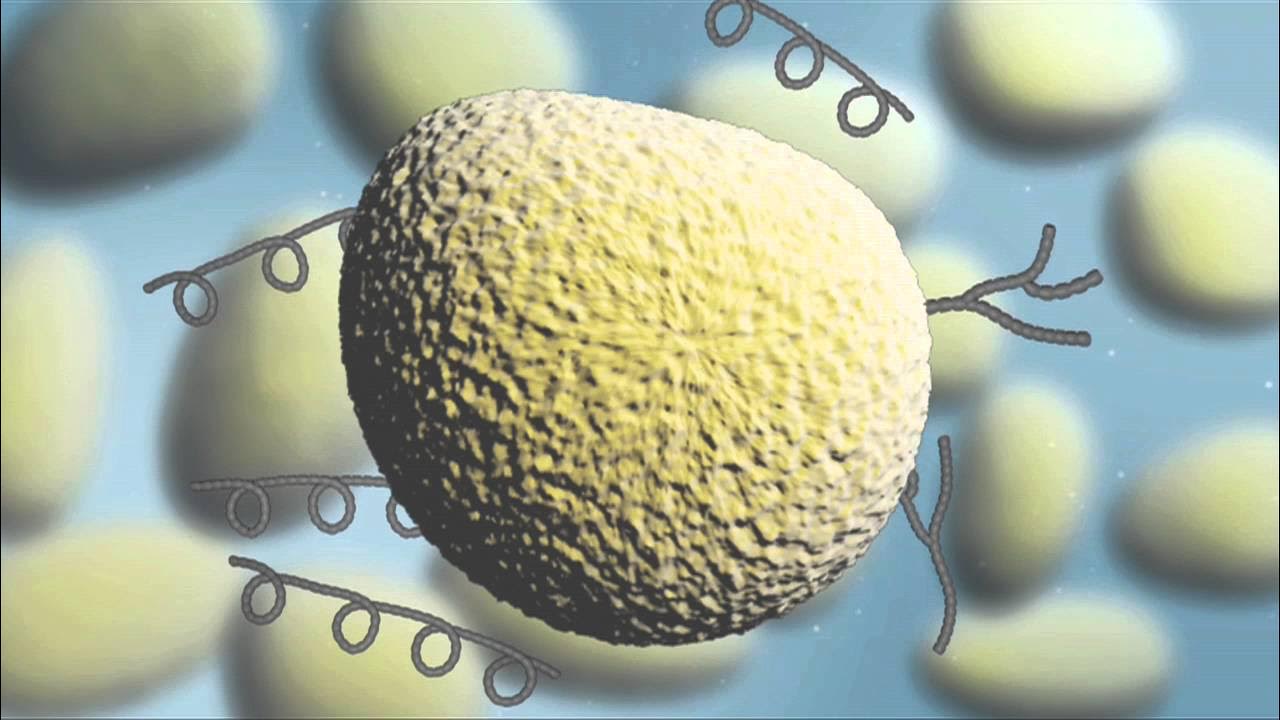Starch Retrogradation | The Science of Stale Bread
Summary
TLDRThis video explores the science behind bread staling, focusing on the process of starch retrogradation. It explains how freshly baked bread is soft due to gelatinization, where starches absorb water and swell. Over time, starch molecules crystallize, releasing water and causing the bread to harden. The video also offers practical tips to delay this process, such as using emulsifiers like lecithin and diacetyl tartaric acid esters or adding hydrocolloids like carboxymethyl cellulose to trap moisture and maintain softness.
Takeaways
- 😀 Freshly baked bread has a soft, tender texture due to starch gelatinization.
- 😀 Starch in bread is made up of amylose (linear form) and amylopectin (branched form), which are essential in bread texture.
- 😀 During baking, starch absorbs water and swells in a process called gelatinization, making the bread soft.
- 😀 When starch molecules cool and age, they undergo retrogradation, causing the bread to become firmer and drier.
- 😀 Retrogradation occurs as starch molecules expel water, reform hydrogen bonds, and crystallize, resulting in staleness.
- 😀 The process of retrogradation is responsible for the texture change in bread after a few days.
- 😀 It's not possible to eliminate retrogradation, but it can be slowed down with certain additives.
- 😀 Adding emulsifiers like monoglycerides or lecithin helps to retain moisture and prevent tough crust formation.
- 😀 Hydrocolloids, such as carboxymethyl cellulose (CMC), can trap water in the starch network, maintaining moisture in bread.
- 😀 These methods can extend the shelf life of bread, keeping it soft and fresh for a longer time.
- 😀 The Maillard reaction, which contributes to the browning and flavor of bread, is also an important process during baking.
Q & A
What happens to bread as it ages, and why does its texture change?
-As bread ages, its texture becomes harder due to a process known as starch retrogradation. This occurs when starch molecules in the bread, primarily amylose and amylopectin, begin to crystallize, causing the bread to lose moisture and become firmer.
What are the basic ingredients used in bread making?
-The basic ingredients in bread making are flour, water, sugar, salt, oil, and yeast.
What role does starch play in bread, and what is its composition?
-Starch makes up about 70% of wheat flour and is a carbohydrate composed of glucose polymers. It exists in two forms: amylose, which is linear, and amylopectin, which is branched. These starch molecules are crucial in the texture and aging of bread.
What is the starch gelatinization process in bread making?
-Gelatinization occurs when starch molecules absorb water and swell in the presence of heat (around 80°C), causing hydrogen bonds in the starch chains to break. This results in the starch expanding and thickening the mixture, contributing to the texture of the bread.
What is the significance of amylose and amylopectin in starch?
-Amylose is a linear chain of glucose molecules, while amylopectin is a branched chain. Both types of starch contribute to the gelatinization process and influence the bread's texture, with amylose being the primary component that leaches out during gelatinization.
How does starch retrogradation affect the texture of bread?
-During starch retrogradation, the starch molecules, particularly amylose, begin to crystallize and pull closer together, expelling water. This process results in the bread becoming firmer and drier, which is why older bread often has a harder texture.
What is an airy system in the context of starch retrogradation?
-An airy system refers to the gel-like structure that forms when starch molecules crystallize and expel water. This network of starch molecules traps water, but as the gel tightens, the water is released, contributing to the harder texture of stale bread.
Can retrogradation be completely eliminated in bread, and if not, how can it be slowed down?
-Retrogradation cannot be completely eliminated, but it can be slowed down by adding emulsifiers such as mono- and diglycerides, lecithin, or diacetyl tartaric acid esters. These ingredients help reduce moisture loss and prevent the formation of a tough crust.
How do hydrocolloids, like carboxymethyl cellulose (CMC), help in bread making?
-Hydrocolloids such as carboxymethyl cellulose (CMC) can help trap water in the starch matrix, which aids in maintaining moisture and preventing the bread from becoming too dry and hard as it ages.
What is the relationship between starch, water, and bread texture?
-Starch interacts with water during baking and aging. When starch absorbs water, it swells and softens the bread. Over time, as retrogradation occurs, water is expelled, and the starch crystallizes, causing the bread to become firmer and drier.
Outlines

このセクションは有料ユーザー限定です。 アクセスするには、アップグレードをお願いします。
今すぐアップグレードMindmap

このセクションは有料ユーザー限定です。 アクセスするには、アップグレードをお願いします。
今すぐアップグレードKeywords

このセクションは有料ユーザー限定です。 アクセスするには、アップグレードをお願いします。
今すぐアップグレードHighlights

このセクションは有料ユーザー限定です。 アクセスするには、アップグレードをお願いします。
今すぐアップグレードTranscripts

このセクションは有料ユーザー限定です。 アクセスするには、アップグレードをお願いします。
今すぐアップグレード関連動画をさらに表示
5.0 / 5 (0 votes)






